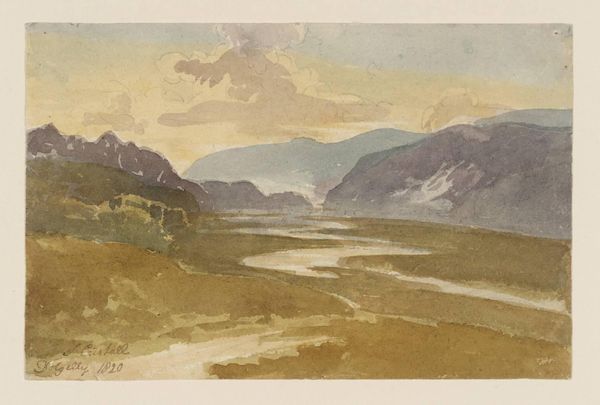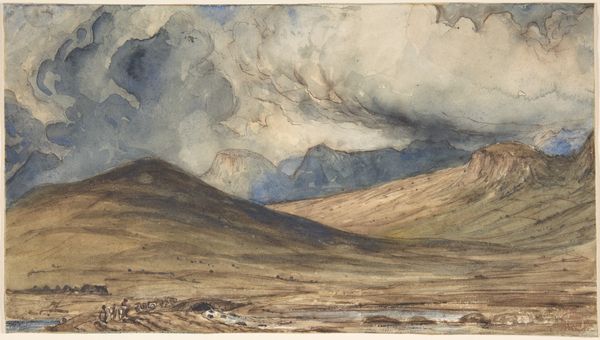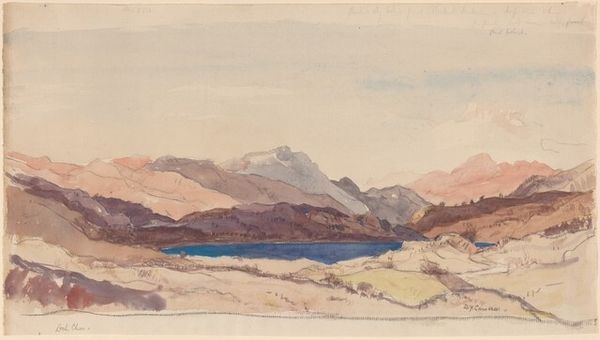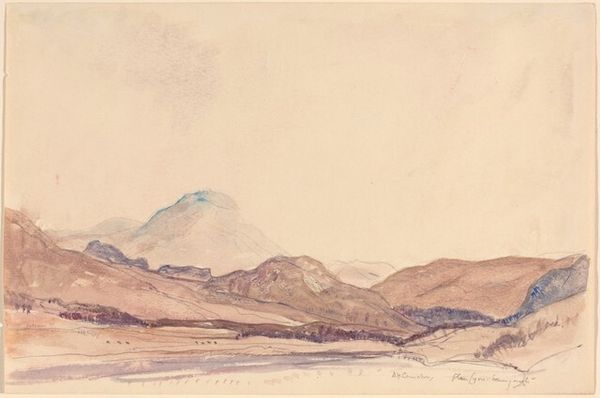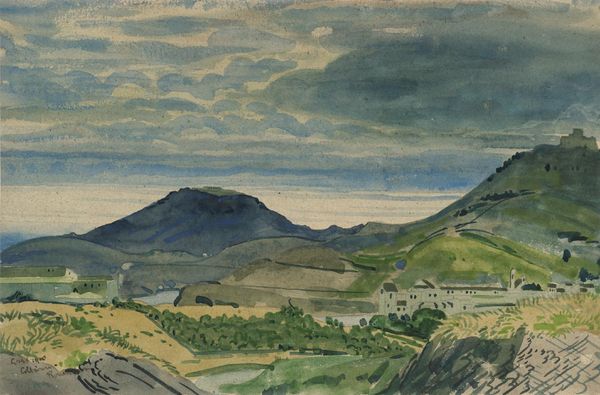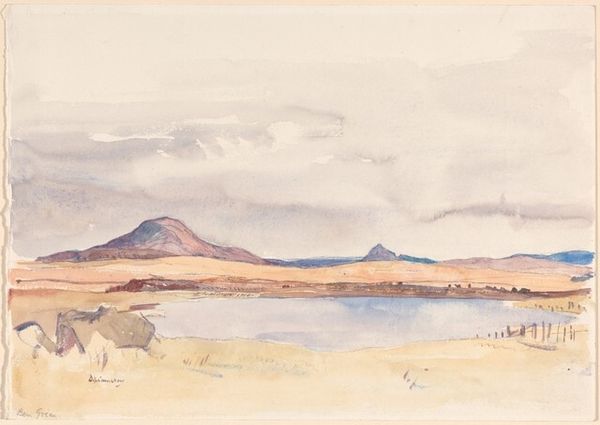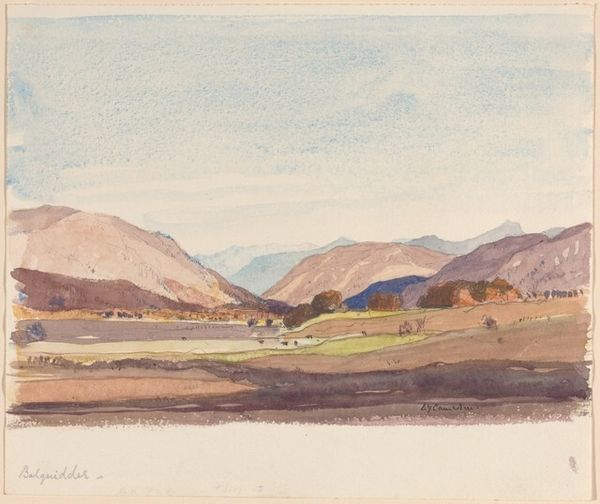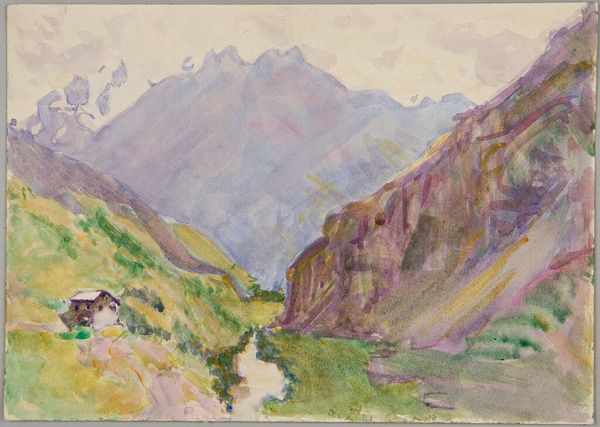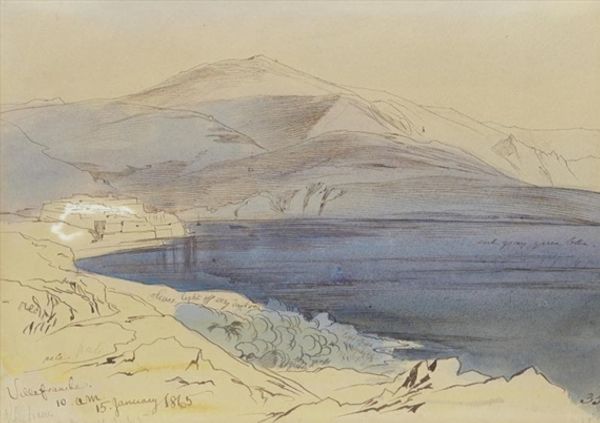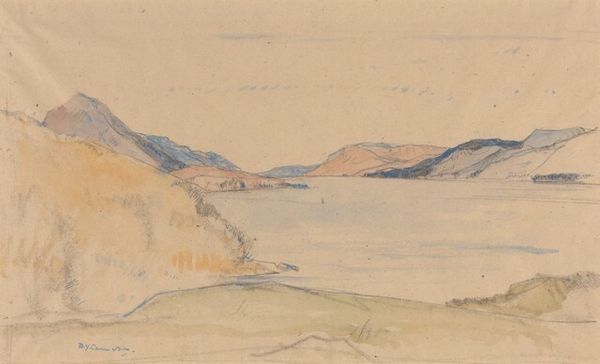
drawing, painting, watercolor
#
drawing
#
painting
#
landscape
#
oil painting
#
watercolor
#
watercolor
#
realism
Dimensions: sight size: 28.2 x 43.5 cm (11 1/8 x 17 1/8 in.) support (sealed mount): 38.1 x 51.2 cm (15 x 20 3/16 in.)
Copyright: National Gallery of Art: CC0 1.0
Editor: This is James McBey's "Glen Douglas," a watercolor from 1927. It’s such a serene landscape; the soft washes of color really capture the stillness of the Scottish Highlands, but there's also a ruggedness implied by the stark mountain slopes. What stands out to you about it? Curator: For me, this piece highlights the changing perception and marketing of Scotland itself. In the 1920s, there was a growing romanticism associated with the Highlands, fueled by tourism and a desire to reconnect with a perceived "authentic" Scottish identity, particularly after the first World War. This image capitalizes on that, don't you think? Editor: Absolutely, I see that. The light and airy quality softens what could be quite harsh terrain. Did McBey deliberately choose watercolor for this effect? Curator: It's highly probable. Watercolor lends itself to this atmospheric perspective, subtly promoting a picturesque, almost palatable version of the Highlands. Consider the limited palette; it almost feels staged for a travel poster, doesn't it? Highlighting the sublimity of the landscape for external consumption and reinforcing ideas of national identity. Editor: That's a really interesting point. I hadn't considered the role of art in promoting tourism and shaping national identity. It gives a whole new layer to the peacefulness of the scene. Curator: Exactly. It prompts us to question who this idealized landscape is really for. Is it a genuine reflection of the Highlands, or is it a carefully curated image intended to appeal to outsiders, and contribute to the construction of Scottish identity in a specific era? Editor: I never would have thought about all the social context within this picture. Curator: That’s why understanding art is so much richer when we look beyond just the visual. We must consider who created it, when, and what socio-political purposes it might have served. Editor: I’ll definitely look at landscape art differently from now on. Thanks!
Comments
No comments
Be the first to comment and join the conversation on the ultimate creative platform.
